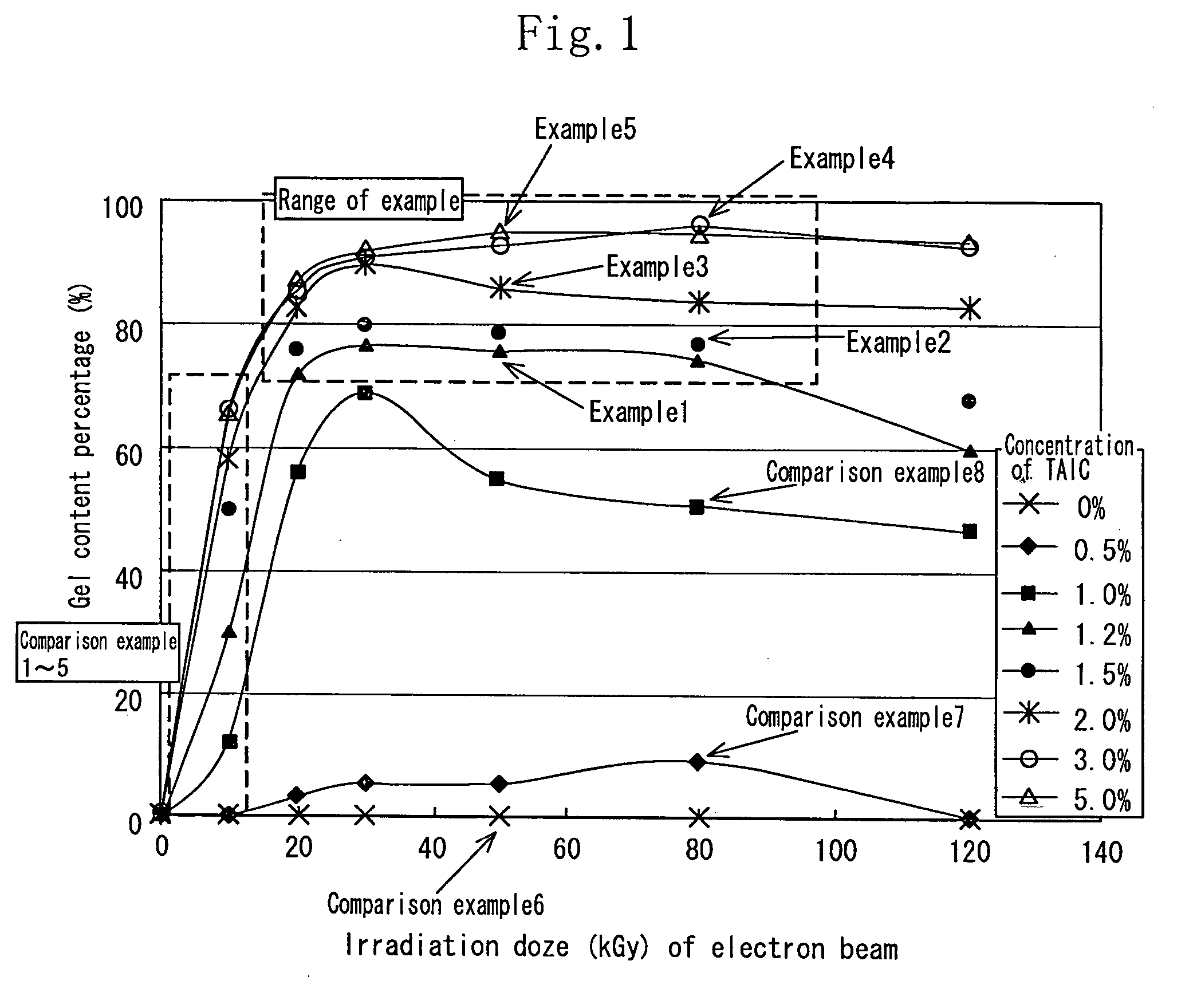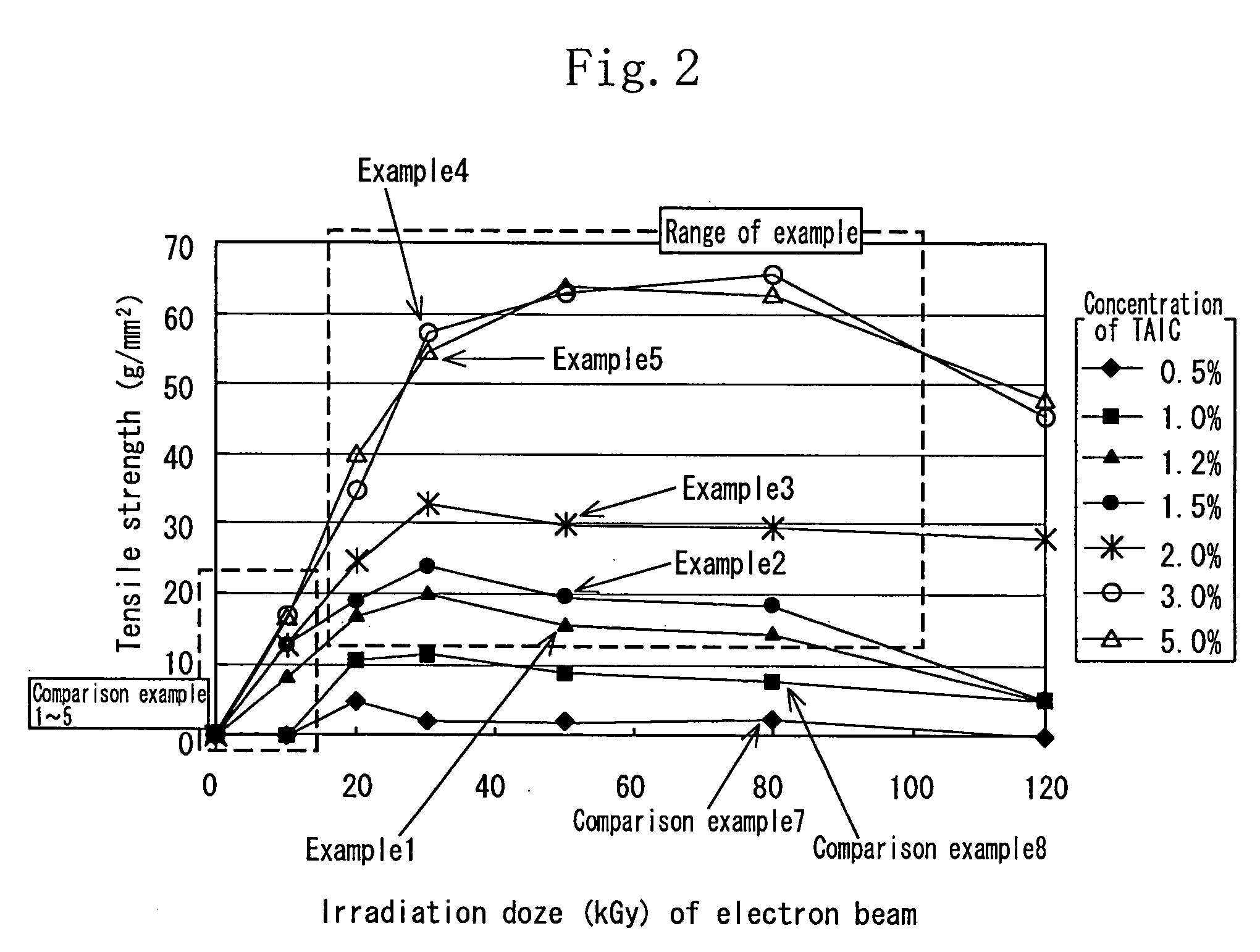Biodegradable material and process for producing the same
- Summary
- Abstract
- Description
- Claims
- Application Information
AI Technical Summary
Benefits of technology
Problems solved by technology
Method used
Image
Examples
example 1
[0112] As the aliphatic polyester, finely powdered polylactic acid (Racia H-100J manufactured by Mitsui Kagaku) was used. 1.2 wt % of the TAIC (manufactured by Nippon Kasei Inc.) which is the allyl monomer was added to the polylactic acid which was melted at 180° C. by using a Lab Plast mill which is a substantially closed kneader, and sufficiently kneaded until it became transparent. The mixture was sufficiently kneaded at 20 rpm for 10 minutes. Thereafter the uniform mixture was thermally pressed at 180° C. to obtain a sheet having a thickness of 1 mm.
[0113] In an air-removed inactive atmosphere, the sheet was irradiated with electron beams at an irradiation dose of 20 kGy to 100 kGy by an electron accelerator (acceleration voltage of 2 MeV, and current value of 1 mA). The obtained crosslinked material by irradiating the sheet with the electron beams was used as the sheet of the example 1.
examples 2 through 5
[0114] The sample of each of the examples 2 through 5 was similar to that of the example 1 except that the concentration of the TAIC added to the polylactic acid was 1.5 wt %, 2 wt %, 3 wt %, and 5 wt % respectively.
example 6
[0168] As the aliphatic polyester, finely powdered polylactic acid (Racia H-100J manufactured by Mitsui Kagaku) was used. As the hydrophobic polysaccharide derivative, powder of acetate ester starch (CP-1 produced by Nippon Corn Starch Inc.) was used.
[0169] In the polysaccharide derivative, the substitution degree of the hydroxyl group is about 2.0. The derivative of the polysaccharide is not soluble in water, but dissolves in acetone. Thus the polysaccharide derivative is hydrophobic. The polysaccharide derivative softens at temperatures not less than 180° C., does not have a definite melting point, and has a very high Young's modulus.
[0170] Five wt % of the acetate ester starch was mixed with 100 wt % of the polylactic acid. The mixture was melted at 190° C. by using a Lab Plast mill that is a closed kneader, and sufficiently kneaded until it became transparent. Thereafter 3 wt % of the TAIC (manufactured by Nippon Kasei Inc.) which is the monomer having the allyl group was adde...
PUM
| Property | Measurement | Unit |
|---|---|---|
| Temperature | aaaaa | aaaaa |
| Temperature | aaaaa | aaaaa |
| Temperature | aaaaa | aaaaa |
Abstract
Description
Claims
Application Information
 Login to View More
Login to View More - R&D
- Intellectual Property
- Life Sciences
- Materials
- Tech Scout
- Unparalleled Data Quality
- Higher Quality Content
- 60% Fewer Hallucinations
Browse by: Latest US Patents, China's latest patents, Technical Efficacy Thesaurus, Application Domain, Technology Topic, Popular Technical Reports.
© 2025 PatSnap. All rights reserved.Legal|Privacy policy|Modern Slavery Act Transparency Statement|Sitemap|About US| Contact US: help@patsnap.com



